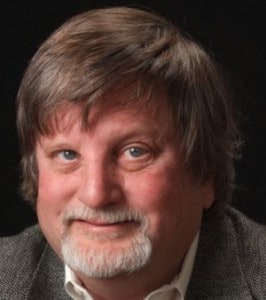Welcome to Accendo Reliability – join us and learn the art and craft of reliability engineering.
Kirk Gray
My Passion for developing reliable products
Why did it fail?
This is the fundamental question that drove my career from first repairing electronics in the 1970’s to today. It was from this perspective that my passion for reliability engineering grew from investigating, discovering and understanding of why products fail. By starting with how electronics systems actually fail (empirical not theoretical) gave me a frame of reference to understand ways to rapidly discover failure mechanisms.
Innovation and new applications for electronics has continued to accelerate, and the need for faster development of reliable electronics has increased. This industry wide need has fueled my desire to teach and use and the most efficient tools for reliability design development and ongoing reliability testing in the and manufacturing process.
I love the hands-on process of failure investigation and repair of electronic systems. It was and is challenging, but very rewarding when discovering a cause of failure, a “so that is why is isn’t working” moment . It might be a burned component, a shorted or broken wire, or something as simple as an unseated connector that caused the failure. Sometimes the root cause of a failure was hard to pinpoint, and I am sure in a few investigations I unknowingly removed the failure mechanism while performing failure analysis.
Focused on Discovery of Design or Manufacturing Weaknesses
It has been my experience as a reliability test engineer and consultant for 25 years that most electronics system failures are due to an assignable cause. That is that most failures of electronic assemblies, are not due to intrinsic semiconductor or component wearout mechanisms such as NBTI, Electromigration, HCI or TDDB in semiconductors or solder fatigue of a nominal solder joint. Instead most failures, especially during the warranty period, are due to errors or exceptions to good design and manufacturing practices, or customer misapplication or abuse.
A Mentor and a new Paradigm
I was fortunate in 1989 to meet and work with a leader and change agent in reliability engineering, Gregg Hobbs, PhD. After Gregg had shown the benefits of HALT and HASS methods to Storage Technology in Colorado I was hired for a newly created position, Manager of ESS (Environmental Stress Screening) process engineering. I supervised a team of test engineers performing HALT, and developing HASS processes. After leaving Storage Technology in 1992, I joined Gregg at the HALT and HASS company he had recently created, QualMark.
Gregg’s method called HALT correlated well with my experience with what caused failures. His methods were changing the fundamental approach to developing robust and reliable electronics. HALT and HASS is a paradigm shift in reliability. HALT and HASS are now acronyms widely known in reliability engineering, although I believe many times misunderstood.
Providing Accelerated Reliability Solutions
I teach, coach, and guide companies designing and manufacturing of electronic and electromechanical systems on a lean “strength/weakness” discovery approach based on the physics of failures, and the inherent strength in today’s electronics assemblies, the HALT and HASS based methods.
I will plan and guide HALT and HASS processes for your company that results in shorter periods of reliability development than traditional methods. I guide teams on product configurations and stress sequences for HALT and HASS, processes test fixtures, and how to determine the best functional discriminators under HASS to monitor process control.
Through teaching and guiding companies on the methods of HALT and HASS, I have had clients reduced warranty return rates from 5% to 0.5%. These results were on a product that had been shipping with the 5% warranty failure rate for two years. The 90% reduction in warranty returns after HALT and HASS also came with a significant reduction in test expense and production cycle time. Production testing was reduced from 72 hours to one (1) hour.
To contact me call: (512) 554-3111 . (I am located in the Denver-Boulder Colorado area but have kept my Austin, Texas phone number).
To find out more, please see click here to my Accelerated Reliability Solutions website
Kirk’s author archive lists contributions of articles and episodes.
 Ask a question or send along a comment.
Please login to view and use the contact form.
Ask a question or send along a comment.
Please login to view and use the contact form.
